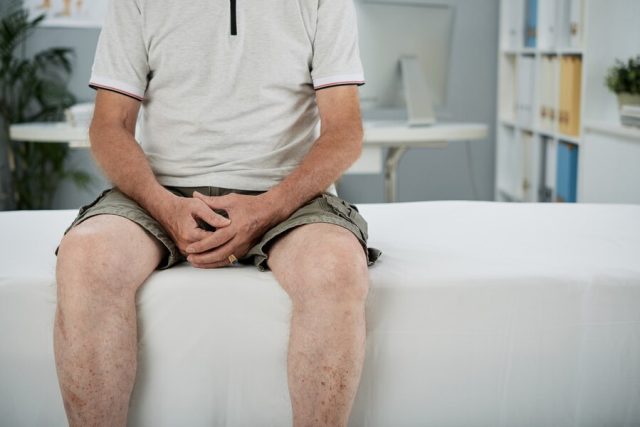Spokesperson: Dr Christopher Lee Kheng Siang, Consultant Urologist and Endourologist, Sunway Medical Centre, Sunway City

When men are asked where their prostate is, many get it wrong or are unsure. Many do not even know what it is. This male organ is a walnut-sized gland at the bladder’s base. The gland produces the fluid that protects and nourishes your sperm, while the muscles keep your bladder closed to keep urine from leaking out[i].
However, this vital organ can cause issues as a man ages, with one of the conditions being benign prostatic hyperplasia (BPH) or prostate enlargement. According to the National Health and Morbidity Survey (2019), About 16% of men in Malaysia aged 40 and above have some degree of BPH, and the number increases to 33% in men aged 75 and above[ii]. Despite its prevalence, BPH often goes unnoticed, leaving countless individuals unaware of their condition and suffering silently.
In conjunction with the month of Movember dedicated to raising awareness about men’s health issues, Dr Christopher Lee Kheng Siang, Consultant Urologist and Endourologist at Sunway Medical Centre, Sunway City, delves into a crucial topic that affects many Malaysian men. Dr Christopher explains, “BPH is caused by the non-cancerous enlargement of the prostate gland and can impact the quality of life of men due to the bothersome urinary symptoms.” The NHMS 2019 survey also reflects Dr. Christopher’s sentiments, with three in five men with probable BPH having a poor quality of life and being dissatisfied with their urination experience[iii].
Dr Christopher explains, “BPH is an advancing ailment that, in its early stages, may manifest as mild discomfort and inconvenience. However, if not addressed, it can progress to a severe condition known as acute urinary retention, where the urethra becomes fully obstructed. This can lead to an inability to urinate, posing a risk of kidney damage, urinary tract infections, and the formation of bladder stones.”
Unveiling the Silent Symptoms of BPH
“Many men dismiss urinary symptoms as a natural part of ageing, not realising that these symptoms can indicate a medical condition that requires attention. If you have not had alcohol or excess liquid shortly before bed, you should not wake up to go to the bathroom,” shares Dr Christopher.
He also identified some additional symptoms for men to look out for:
- Frequent urination, especially at night, disrupts sleep patterns.
- Urgency to urine and difficulty holding in urine, leading to some leakage.
- Difficulty starting urination due to urethra obstruction, making it challenging to initiate the urine flow, resulting in straining during urination.
- Weak urine stream due to the narrowed urethra caused by the enlarged prostate.
- Incomplete emptying or dribbling at the end of urination, leading to frequent discomfort or urinating.
- Urinary retention in severe cases where the individual cannot urinate. This is a medical emergency and requires immediate attention.
Taking Action Against BPH
Dr Christopher shares, “Men aged 40 and older, those with a family history of BPH, individuals with existing medical conditions like obesity, heart disease, circulatory issues, type 2 diabetes, or a lack of regular exercise are all at a higher risk of developing BPH. Nevertheless, there are very effective ways of managing this condition, depending on the severity:
- For mild symptoms, lifestyle modifications such as managing fluid intake and reducing caffeine and salt can help ease the symptoms of BPH.
- For moderate symptoms, medications can help relax the prostate and urethra muscles or gradually reduce the prostate’s size over time to make urine flow easily.
- For men with more severe BPH or those who do not respond to medications, several different surgical procedures are available, and the best option for you will depend on your circumstances.
“It’s essential for individuals to consult healthcare professionals and explore suitable options tailored to their condition. Early detection is key. Regular check-ups can aid in timely diagnosis and appropriate management of BPH. Men must understand that seeking medical advice and exploring available treatment options can greatly improve their quality of life.”
For patients who think they have or suspect they might have BPH, Dr Christopher recommends answering the International Prostate Symptom Score (IPSS) developed by the World Health Organisation to assess BPH symptoms and severity. He adds, “Having basic blood and urine tests done once a year to screen for infection, prostate cancer or BPH and visiting your urologist or doctor can help, but the symptoms score itself gives us much information.”
The variety of Treatment Options for BPH depends on the severity.
Dr Christopher also shares several surgical treatment options for more moderate to severe cases of BPH, which include:
- Transurethral resection of the prostate (TURP) is one of the most common & widely practised surgery for BPH in the past decades but has some undesirable side effects, especially sexual dysfunction.
- Water vapour therapy OR Microwave therapy is a modern, minimally invasive procedure performed as an outpatient treatment and suitable for mid-size prostate cases, and has the added advantage of much lower risk of sexual side effects.
- Laser enucleation or Bipolar enucleation of the prostate is most suitable for large prostates as an alternative to the TURP surgical method.
- Robotic prostatectomy is a state-of-the-art surgery for very large prostates as an alternative to open surgery to remove the prostate gland.
Precision and Progress: Robotic Surgical Methods to Treat Severe Cases of BPH
Robotic surgery for BPH has transformed the treatment landscape, offering patients a minimally invasive approach with remarkable benefits. Dr Christopher shares, “Minimally invasive surgery penetrates deep into the pelvis, reducing the impact of the abdominal wall thickness. It involves small, one-centimetre incisions compared to traditional surgical methods where the incision was 15-20 centimetres at the centre of the abdomen. This significantly minimises pain and hastens recovery. Patients can resume their routines sooner than traditional surgical methods.”
Empowering Men In Their Health Management
Understanding urinary health and knowing that there are available treatments and that the condition is treatable can empower many men to find the proper treatment and live their lives.
“Men should not suffer in silence; instead, they should seek proper screening and treatment to return to their normal lifestyle. There’s no need to accept urinary symptoms as an inevitable part of ageing. Seeking help and understanding the available treatment options is wise and empowering,” advises Dr Christopher.
[i] https://www.besturologyclinic.com/blog/things-most-men-dont-know-about-their-prostate
[ii] https://iku.moh.gov.my/images/IKU/Document/REPORT/NHMS2019/Report_NHMS2019-NCD_v2.pdf
[iii] https://iku.moh.gov.my/images/IKU/Document/REPORT/NHMS2019/Report_NHMS2019-NCD_v2.pdf













